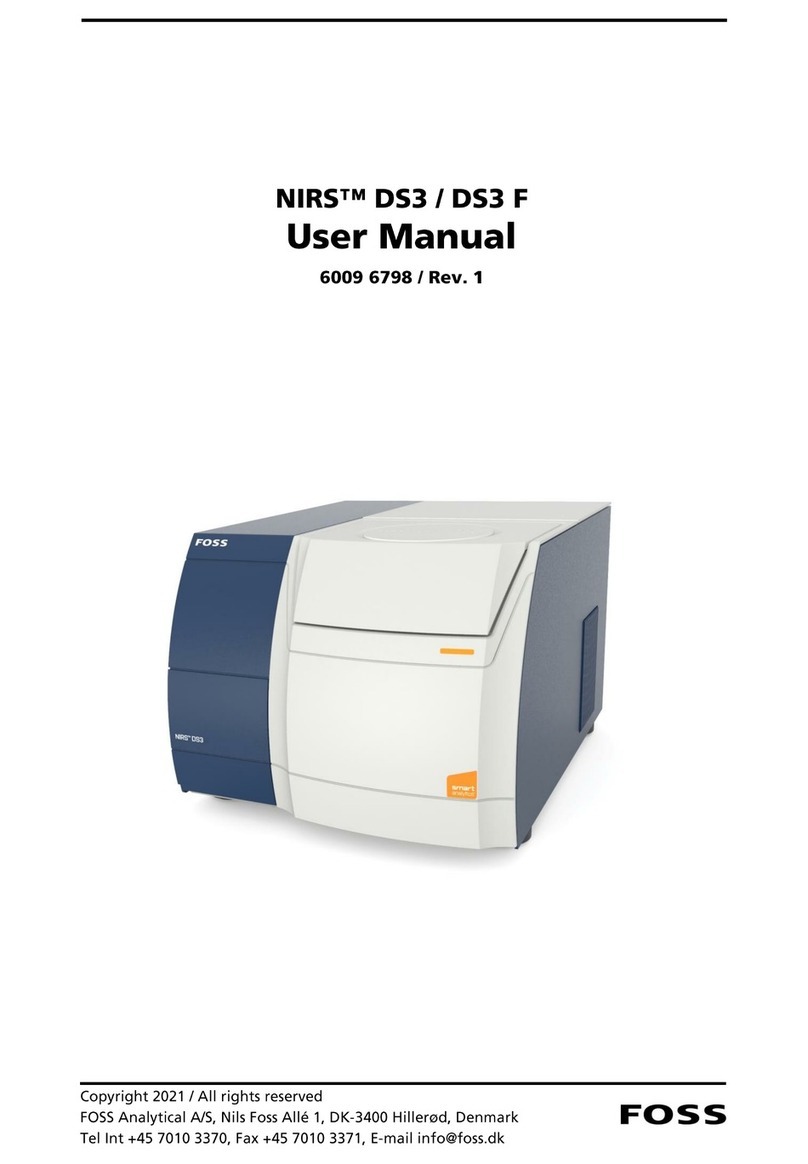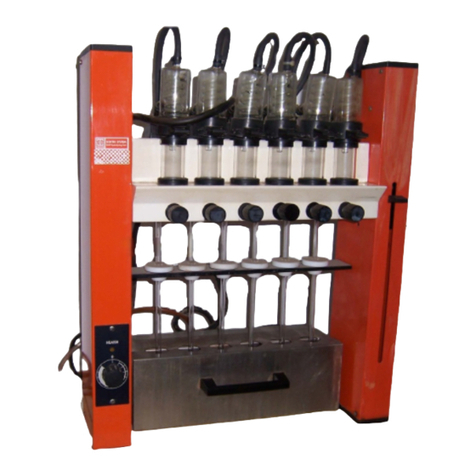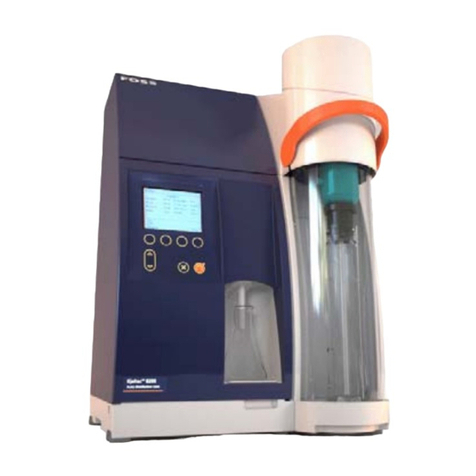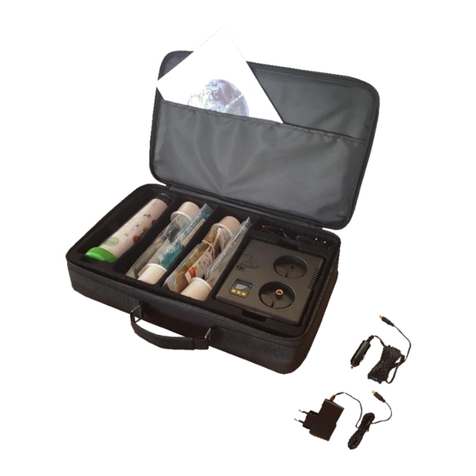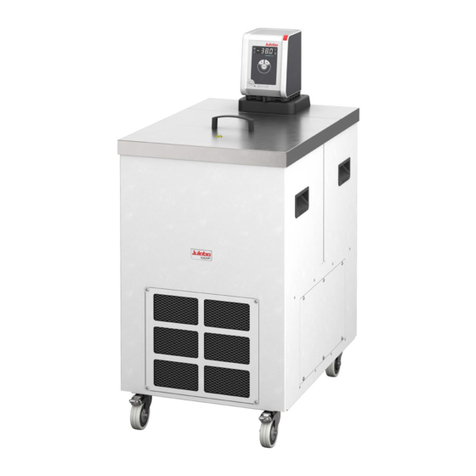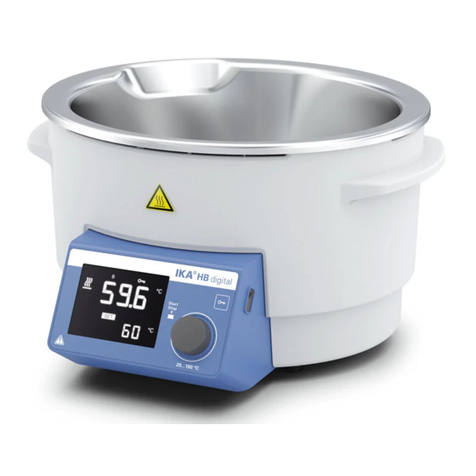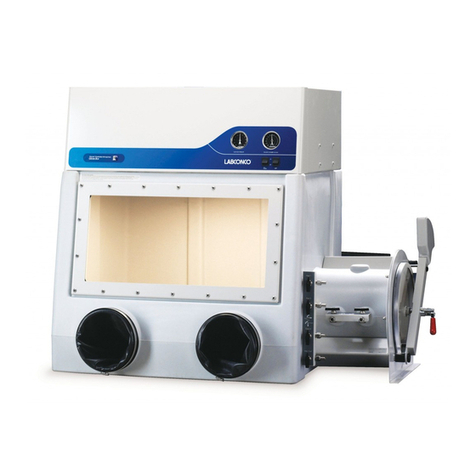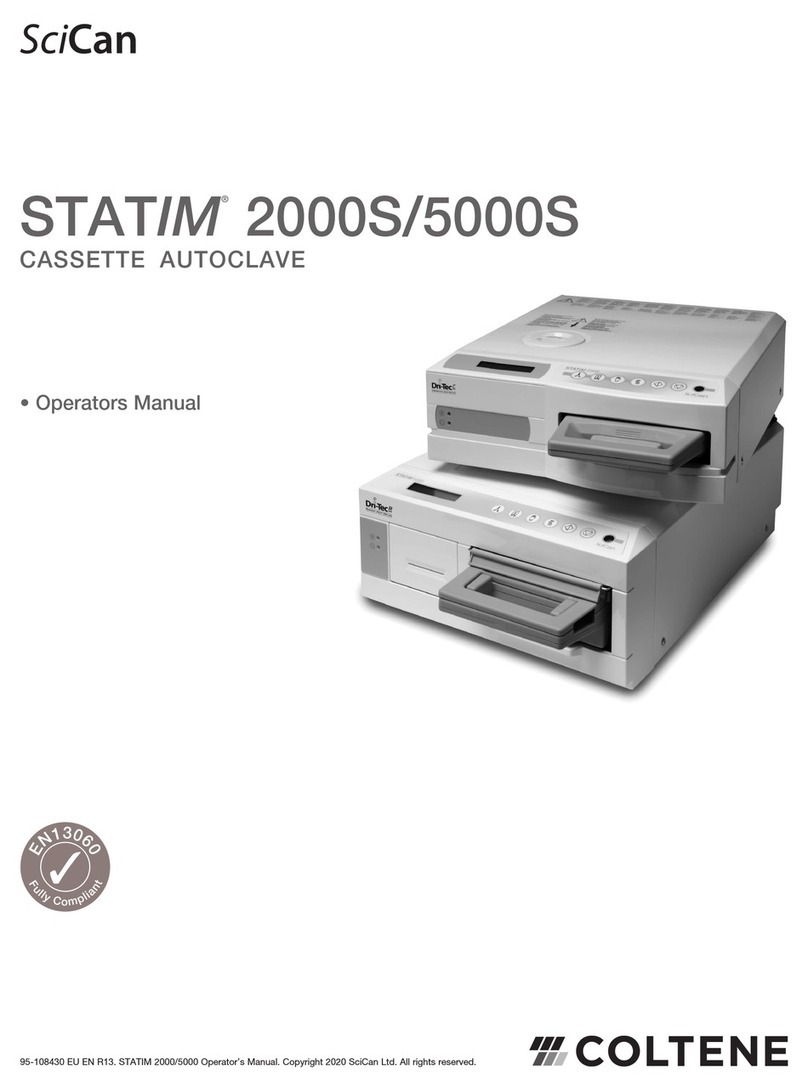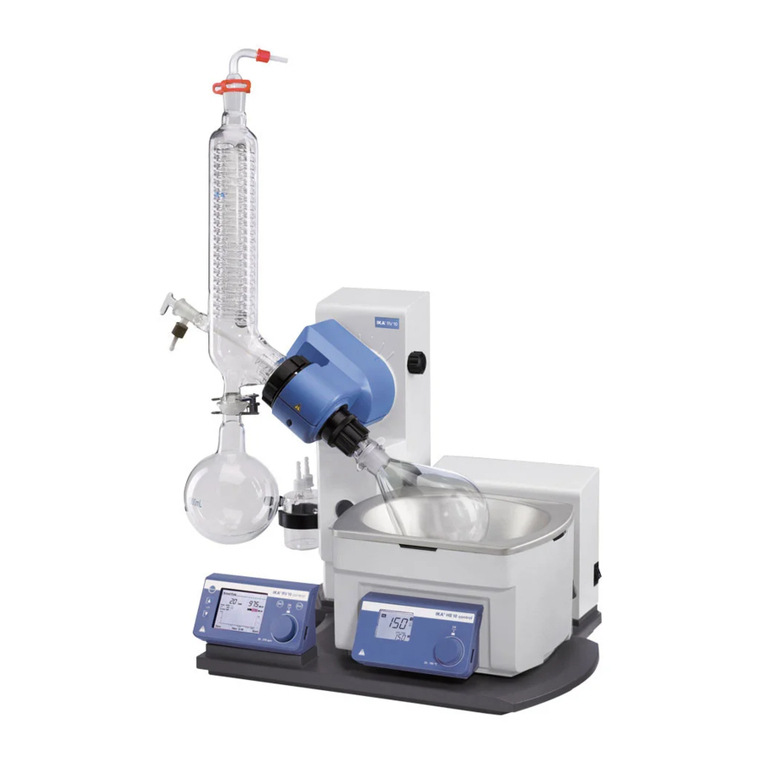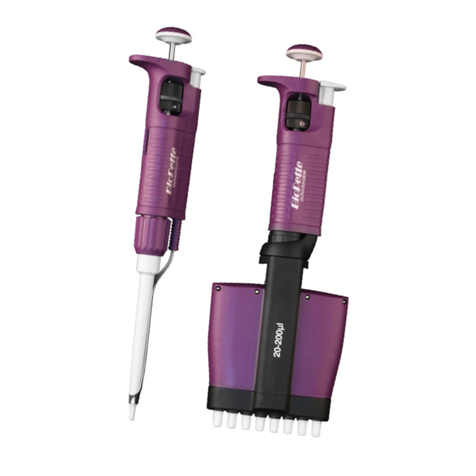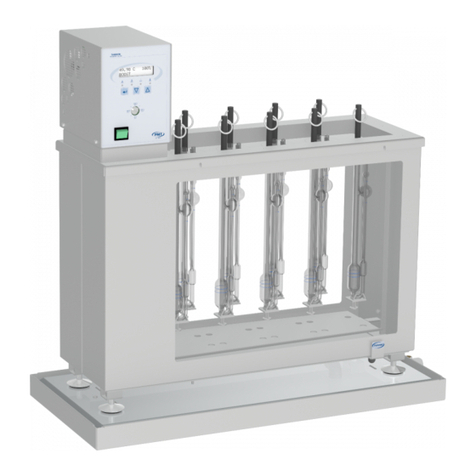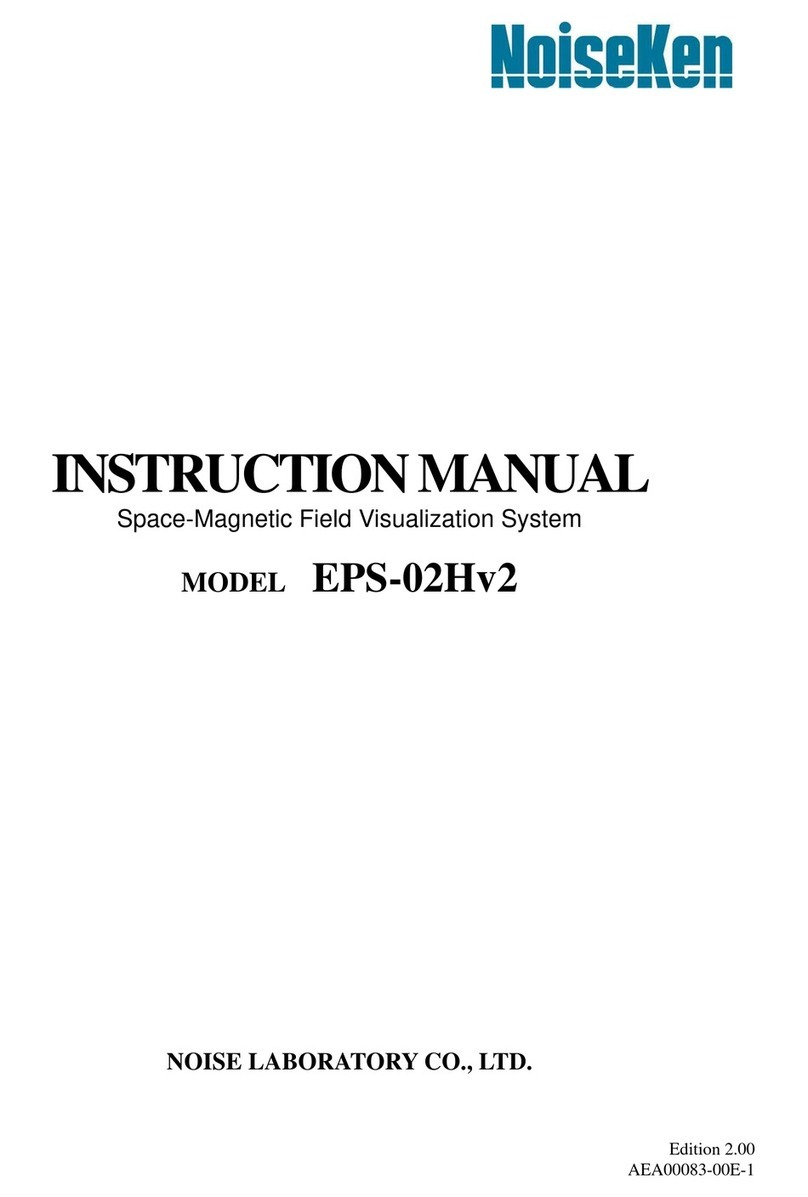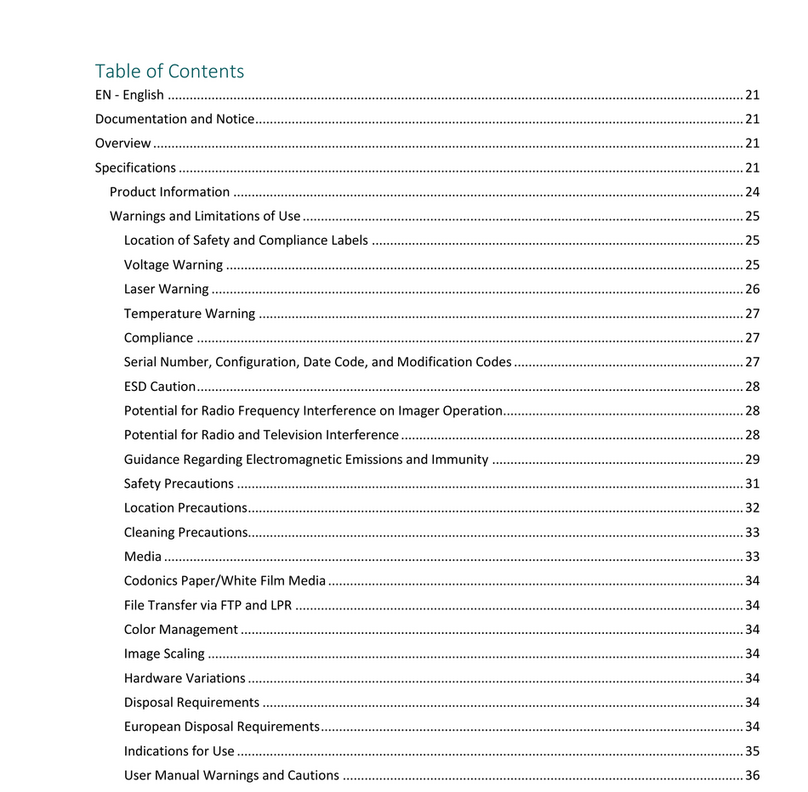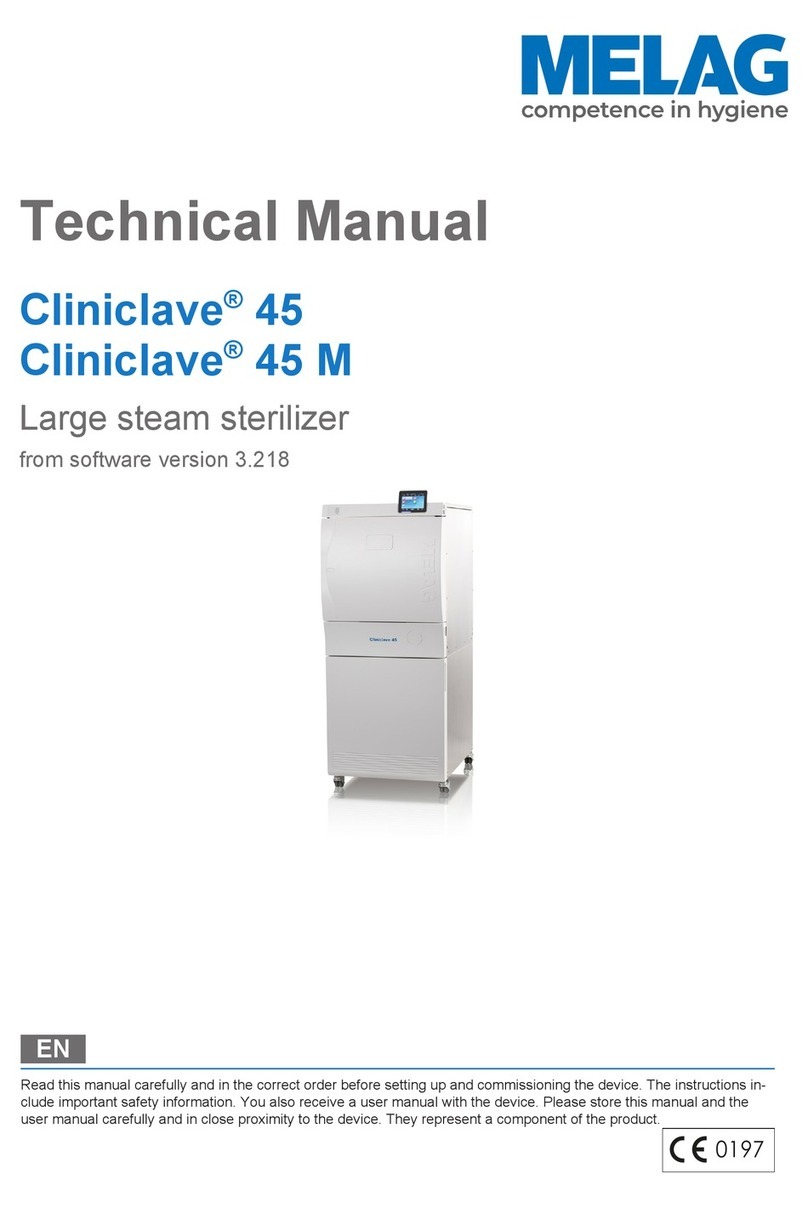Foss EyeFoss User manual

Copyright 2010 / All rights reserved
FOSS Analytical A/S, Foss Allé 1, DK-3400 Hillerød, Denmark
Tel Int +45 7010 3370, Fax +45 7010 3371, E-mail info@foss.dk
EyeFoss™
User Manual
6007 2981 / Rev. 10

EyeFoss™
User Manual
All information is liable to change without prior notice. For latest information about documentation
updates for your specific instrument, please contact your local FOSS representative..
Rev. Date of Issue Revised Material
1 2010-06-22 First edition
2 2013-07-12 General update
3 2014-11-20 Genereal update
4 2015-01-10 Update of safety information
5 2015-12-07 General update
6 2015-12-21 New part number. Safety chapters moved to “Safety Manual” (6007 2939).
7 2016-04-12 Legal Data and PC Requirements updated
8 2016-12-09 Updated to reflect Foss Integrator version 2. Various changes.
9 2017-07-01 Update of section 4.7 and 8.4
10 2018-02-26 SampleUI added (section 4.13)

EyeFoss™
User Manual 6007 2981 / Rev. 10
Table of Contents
1 Safety..................................................................1:1
1.1 General ........................................................................... 1:1
1.1.1 Safety Symbols ............................................................... 1:1
1.1.2 Safety Terminology ......................................................... 1:1
1.2 Personal Safety ............................................................. 1:1
1.2.1 General ........................................................................... 1:1
1.2.2 Laser ............................................................................... 1:2
1.3 Product Safety ............................................................... 1:3
1.4 Disposal Instructions ................................................... 1:4
1.5 Warranty Policy ............................................................. 1:4
1.6 Copyright of Embedded Software ............................... 1:5
1.7 Trademarks .................................................................... 1:5
1.8 Abbreviations ................................................................ 1:5
2 Introduction........................................................2:1
2.1 General ........................................................................... 2:1
2.2 Image Analysis .............................................................. 2:1
2.3 System Description ...................................................... 2:3
2.3.1 General Description ........................................................ 2:3
2.3.2 System Overview ............................................................ 2:4
2.3.3 Functional Description .................................................... 2:4
2.3.4 Start Button ..................................................................... 2:5
2.3.5 A Kernel’s Way Through an Analysis .............................. 2:6
2.3.6 Protection Cap ................................................................ 2:7
2.4 EyeFoss™ Software ..................................................... 2:8
3 Installation..........................................................3:1
4 Operating Instructions......................................4:1
4.1 Getting Started .............................................................. 4:1
4.2 Foss Integrator Start-up ............................................... 4:1
4.3 Installing a License ....................................................... 4:2
4.4 Importing a Prediction Model ...................................... 4:4
4.5 Setting Up a Product .................................................... 4:7
4.5.1 Creating Quick Job for Single Kernals Anaylsis ............ 4:12
4.6 Making a Zero Setting (Calibration) .......................... 4:15
4.7 Running a Self-test ..................................................... 4:19

EyeFoss™
User Manual 6007 2981 / Rev. 10
4.7.1 Viewing or Printing the Diagnostic Report .....................4:20
4.7.2 Explaination of the Diagnostic Report ...........................4:21
4.8 Analysing a Sample ....................................................4:23
4.8.1 Single Sample ...............................................................4:23
4.8.2 Multiple Samples ...........................................................4:25
4.9 Editing Sample Information ........................................4:27
4.10 Exporting Result ..........................................................4:28
4.10.1 Use of Other Templates ................................................4:30
4.11 Creating a New User ...................................................4:35
4.12 Mosaic Connection .....................................................4:38
4.12.1 Mosaic Settings .............................................................4:39
4.13 EyeFoss Simple UI ......................................................4:42
4.13.1 Launching SimpleUI ......................................................4:42
4.13.2 Using SimpleUI ..............................................................4:44
4.13.3 Closing SimpleUI ...........................................................4:45
5 Maintenance...................................................... 5:1
5.1 EyeFoss Maintenance ...................................................5:1
5.1.1 General ............................................................................5:1
5.1.2 Cleaning/replacement of Conveyor Belt ..........................5:1
5.1.3 Cleaning / Replacement of Belt Brush ............................5:3
5.1.4 Cleaning of Anti-Static Brush ..........................................5:4
5.1.5 Replacement of Fuses ....................................................5:4
5.1.6 Replacement of Filter ......................................................5:5
5.1.7 Software Maintenance .....................................................5:6
5.2 FOSS Service Visit ........................................................5:8
6 Troubleshooting ............................................... 6:1
6.1 Foss Integrator Troubleshooting .................................6:1
6.1.1 At Startup ........................................................................6:1
6.1.2 Communication Problems ...............................................6:1
6.1.3 In Foss Integrator ............................................................6:2
6.1.4 Module Problems ............................................................6:3
6.2 Communication Errors .................................................6:3
7 Parts, Accessories and
Consumables..............................................................7:1
8 Technical Specifications.................................. 8:1
8.1 Technical Data ...............................................................8:1
8.2 Installation Requirements ............................................8:1

EyeFoss™
User Manual 6007 2981 / Rev. 10 1:1
1 Safety
1.1 General
Please read the user manual carefully and use the instrument as advised. Follow all
safety precautions as instructed.
1.1.1 Safety Symbols
Explanation of safety symbols used in this manual.
1.1.2 Safety Terminology
Explanation of safety terms used in this manual.
1.2 Personal Safety
1.2.1 General
Warning
In order to find out the nature of the potential hazard, please
consult this manual in all cases where this symbol is used.
Warning
Unpacking, assembly and installation of the instrument should
be performed by a FOSS authorised service engineer.
Warning
The instrument is NOT to be operated in atmospheres which could
constitute an explosion risk.
Symbol Description
General hazard.
Electrical shock hazard.
Hot surface.
Laser hazard.
Crush hazard.
Term Description
Warning Danger to human safety.
Caution Danger to product performance / operation.
Note Important supplementary information.

EyeFoss™
1:2 User Manual 6007 2981 / Rev. 10
Warning
The marking labels must be visible to the operator and shall not
be removed from the instrument or made unreadable in any way.
Warning
EyeFoss is equipped with a earthed type power plug for your
protection against electric shock hazard and must be attached to
a properly grounded/earthed power outlet by using a power
cable (100-240 V AC) with protective earthing.
Warning
The instrument weighs 50 kg and must be lifted by at least two
persons, using the handles in instrument bottom or a lifting
device.
Warning
The cooling flange can reach a very high temperature. (This label
is placed on the cooling flange).
Warning
Risk of getting jammed when cleaning the conveyor belt.
Warning
Risk of getting jammed when cleaning the bottom of the feeder.
1.2.2 Laser
The EyeFoss is a Class I laser product and contains a laser. The laser is totally
shielded by the cabinet, and there is no risk of laser radiation during normal use.
The embedded laser is a Class 3B laser with the specifications:
• Max output of laser: 25 mW
• Led wavelength: 658 nm
Warning
Use of controls or adjustments or performance of procedures
other than those specified in this manual may result in hazardous
radiation exposure. There are no adjustment procedures for the
laser that are to be performed by the operator; all adjustments
are to be carried out by a qualified service engineer.
Warning
Make sure that there is no gap between the protection cap and
the metal sheet by securing the screw as the laser reflection can
be hazardous to the operator.
Warning
Avoid exposure to beam. The class 3b laser product is embedded
in the product. The camera unit cover must be mounted when the
instrument is switched on.

EyeFoss™
User Manual 6007 2981 / Rev. 10 1:3
Position of laser labels
Fig. 1:1 On the rear of the instrument
Fig. 1:2 On the camera unit cover
1.3 Product Safety
Caution
Do not disconnect power to EyeFoss while the instrument
software is being updated.
Caution
The operator should be aware that if the equipment is used in a
manner not specified by the manufacturer, the protection
provided by the equipment may be impaired.
Caution
The instrument is designed and tested for European (CE)
compliance. To ensure that this compliance is maintained,
connect only CE approved equipment. Connecting equipment
that is not CE approved may cause EMC incompatibility and
thereby affect the function of the instrument and other
equipment.
Caution
The system may only be repaired by personnel certified by FOSS.
FOSS recommends the use of original FOSS spare parts. If spare
parts from other are used, the warranty no longer applies.
Caution
If an ESD cap is provided, it should be mounted on any port not
being used.
CLASS 1 LASER PRODUCT
Complies with 21 CFR 1040.10 and 1040.11
except for deviations pursuant to laser
Notice No. 50, dated June 24. 2007
Complies with EN 60825-1:2007
CLASSE 1 PRODUIT LASER
Conforme à la norme 21 CFR 1040.10 et 1040.11
sauf pour les écarts en vertu de l'avisLaser Notice N° 50
du 24 juin 2007
Conforme à la norme EN60825-1:2007

EyeFoss™
1:4 User Manual 6007 2981 / Rev. 10
Caution
It is very important that all equipment connected to the EyeFoss,
i.e. computer or a printer, is connected to the same single power
outlet with protective ground as the EyeFoss. Differences in
ground potential between different power sources will disturb
communication or even destroy the communication line drivers.
Caution
The air circulation around the cooling flange must not be
inhibited. Leave uncovered with sufficient space for air
circulation at all times.
Caution
Make sure that the plug and the cord comply with local
requirements. Also make sure that the plug and the cord comply
with the instrument power consumption.
1.4 Disposal Instructions
Do not dispose of this electrical device with unsorted household
waste. Improper disposal may be harmful to environment and
human health. Please refer to your local waste authority for
information on return and collection systems in your area.
1.5 Warranty Policy
Warranty conditions are either specified on the order confirmation of the purchase
order together with the invoice, or in the contract with the FOSS representative and
only apply if:
• the Customer/User has followed all written instructions and documentation from
FOSS regarding the product
• the product has been installed, maintained, adjusted and calibrated according to
all descriptions and recommendations in the documentation
• the product has not been used for purposes other than those reasonably
contemplated by FOSS
• the product has not been altered or repaired with non-original FOSS parts or by
personnel not authorised by FOSS
• only original FOSS consumables and accessories or equivalents recommended
by FOSS have been used
• the product has not in any other ways been handled contrary to ordinary practice
• only software authorised by FOSS has been installed on any product PC
• any external product PC has complied with the recommendations of the FOSS
representative
• computer games have not been played on the PC, including any games
preinstalled together with the operating system.
• the instrument has been properly maintained, as recommended by FOSS.
Your instrument may contain parts that, due to wear during use of the instrument, are
expected to have a shorter lifetime than the instrument in general. These parts are

EyeFoss™
User Manual 6007 2981 / Rev. 10 1:5
listed in the User Manual and/or in the FOSS product software and in the Owner's
Guide.
The liability for worn down parts subject to wear is limited to cases with
extraordinary wear due to defective material or production errors.
1.6 Copyright of Embedded Software
Copyright (c) 2001, 2002 Swedish Institute of Computer Science.
All rights reserved.
Redistribution and use in source and binary forms, with or without modification, are
permitted provided that the following conditions are met:
1. Redistributions of source code must retain the above copyright notice, this list
of conditions and the following disclaimer.
2. Redistributions in binary form must reproduce the above copyright notice, this
list of conditions and the following disclaimer in the documentation and/or other
materials provided with the distribution.
3. The name of the author may not be used to endorse or promote products derived
from this software without specific prior written permission.
This software is provided by the author “as is” and anyexpress or implied warranties,
including,butnotlimitedto,the implied warranties of merchantability and fitness for
a particular purpose are disclaimed. In no event shall the author be liable for any
direct, indirect, incidental, special, exemplary, or consequential damages (including,
but not limited to, procurement of substitute goods or services; loss of use, data, or
profits; or business interruption) however caused and on theory of liability, whether
in contract, strict liability, or tort (including neglience or otherwise) arising in any
way out of the use of this software, even if advised of possibility of such damage.
1.7 Trademarks
EyeFoss™ is a registered trademark of FOSS Analytical A/S. Windows® is a
registered trademark of Microsoft Corporation.
1.8 Abbreviations
Explanation of abbreviations used in this manual.
FI Foss Integrator
TWM Test Weight Module

EyeFoss™
User Manual 6007 2981 / Rev. 10 2:1
2 Introduction
2.1 General
This manual will take you through the routine operation of the EyeFoss™ instrument
and its functions. It will also give guidance for the routine maintenance to secure
accurate analysis and ensure a long instrument life.
2.2 Image Analysis
During the growth period and harvest grain is affected by factors such as weather,
soil, growth location, harvest conditions, fungi, insects etc. These factors have an
influence on the quality and the properties of the grain such as the visual appearance,
the number of damaged kernels, the taste and the baking characteristics. Historically,
evaluation of grain appearance has been done by the only tool available - the human
eye. Combined with various accessories such as sieves and scales, this has provided
information for different grading methods.
An accurate and consistent visual inspection and a correct and objective evaluation
require long experience as well as a deep knowledge. Because of that, the grain
industry has awaited a product that is able to perform reliable grain inspections in a
consistent, rapid, cost-effective and objective way. EyeFoss is a flexible image
analysis instrument for objective automated inspection and classification of grains
that fulfils all of these criteria.
Intended Use
EyeFoss is an image analysis instrument for inspection of different characteristics in
grain, such as size, shape, health etc. with high accuracy. There is no need for sample
preparation or cleaning before running the analysis. An image analysis is operated
through the software program Foss Integrator™, where the images and results of the
kernel sample are displayed.

EyeFoss™
User Manual 6007 2981 / Rev. 10 2:3
Fig. 2:2 EyeFoss™
2.3 System Description
2.3.1 General Description
The EyeFoss is an image analysis instrument that is capable of a simultaneous and
accurate determination of several classes of whole grain samples.
The image analysis is based on a 2D monochrome line-scan camera and a 3D laser,
which makes it possible for the instrument to measure the kernels colour, brightness
and shape. Thousands of pictures are made of six different diodes transmitting light
with wavelengths in the NIR and visual range. The pictures are automatically put
together, interpreted and diagnosed in Foss Integrator.
There is no need for sample preparation. A physical and digital kernel separation
ensures that most of the images will be useful for the assessment. The analysis time
from the time the start button is pressed until the result is displayed, is two to three
minutes for a standard sample. The result, which is calculated by Foss Integrator is
displayed on the screen of the connected PC and may be printed if a printer is
connected.
The electronic and optical parts of EyeFoss are assembled in a sealed chassis and can
therefore be placed in a dusty or humid environment. The analysis is automatic and
calibrated through known references.
1On/Off switch 7USB connection
2Fuses 8HDMI connection
3Power cable connection 9Filter
4PC communication connection 10 Cooling flanges
5Network communication connection 11 External fan
6USB connection
EF021a
3
2
1
109
411
5678

EyeFoss™
2:4 User Manual 6007 2981 / Rev. 10
2.3.2 System Overview
The main parts of the EyeFoss are:
Fig. 2:3 System Overview
2.3.3 Functional Description
Normal Analysis
The sample is poured via the hopper (1) to the feeder (2).
The feeder pushes the sample upwards over the slide onto the conveyor belt (3). A
built-in vibration of the feeder slide distributes the kernels evenly over the conveyor
belt.
As the sample is brought forward by the belt, the camera (4) continuously takes
pictures of all kernels.
The camera unit consists of a line-scan camera for image reproduction and a 3D laser
for determination of physical parameters (length, height, volume).
Images are processed by the internal processor, also called prediction engine, (5) and
the final results are displayed on the external PC (6).
After completion of the analysis, the kernels are collected in the drawer (7) for
disposal or archiving.
1Hopper 5Prediction engine
2Feeder 6External PC
3Conveyor belt 7Drawer
4Camera

EyeFoss™
User Manual 6007 2981 / Rev. 10 2:5
Results and images may be printed or exported to other computers or LIMS system
via direct communication with the external PC or to remote databases via a network
connection.
Single Kernels Analysis
Single kernels can be analysed by manually placing them on the conveyor belt
between the feeder and the camera unit. Selecting the corresponding application in
the user interface will move the kernels into the camera unit for image capturing and
back again (not entering the collection drawer).
See section 4.5.1 for how to create a quick job for signle kernal analysis.
Flush Excess Sample
The amount of kernels to be analysed can be set in the software. If the sample volume
poured into the feeder exceeds this limit, the feeder and conveyor belt will move the
excess sample to the collection drawer at a faster pace before the actual measurement
starts.
Fixed Volume Sample
Intake volume can be set to a specific value for a product. This can be done when
setting up a product which is described in setion 4.5.
2.3.4 Start Button
In the upper right corner of the EyeFoss is a start button. It indicates which process
is on-going.
Fig. 2:4 Start button
In the table below the different indications of the start button are explained.
Start button Description
Green Pour in the sample.
Green blinking Sample in feeder, EyeFoss is ready for analysis.
Red Ongoing analysis.
Red blinking Completed analysis, the drawer can be emptied and a
new sample can be run.

EyeFoss™
2:6 User Manual 6007 2981 / Rev. 10
2.3.5 A Kernel’s Way Through an Analysis
A kernel’s way through an analysis is briefly described below.
Fig. 2:5 A kernel’s way through an analysis
Ef026a
## #####
The prediction engine sends the result
of the evaluation and the composed
image to Foss Integrator for display on
the external computer.
Thousands of pictures are taken of each
kernel which in the end generates six
images. The images are then sent to the
internal prediction engine were they are
evaluated.
The camera takes pictures of each
kernel on the conveyor belt which
passes by the camera unit. The
camera unit consists of diodes that
transmit light in six different
wavelengths in the range from 405 to
850 nm.
Pour sample
CameraCamera
Images
Result
Evaluation
Pour the sample into the hopper of the
instrument.
UV Blue Green Orange Red NIR
The unknown kernel gets classified in
order to the pre-installed component
settings. The ones viewed here are only
a selection of a number of components
that exist.
Unknown
Black point
Field fungi
Sprouted
Wild Oat
Wheat healthy

EyeFoss™
User Manual 6007 2981 / Rev. 10 2:7
2.3.6 Protection Cap
Warning
Make sure that there is no gap between the protection cap and
the metal sheet by securing the screw as the laser reflection can
be hazardous to the operator.
Fig. 2:6 The protection cap must close the gap
1Securing screw
2Protection cap
3No gap here
Ef025a
1
2
3

EyeFoss™
2:8 User Manual 6007 2981 / Rev. 10
2.4 EyeFoss™ Software
EyeFoss can only be operated via the external PC and the program Foss Integrator
(FI). For information on how to use this program, see chapter 4 "Operating
Instructions".
User Interface
For daily work the FI will start up with the Report window.
Fig. 2:7 Dialogue box
1Products
2Sample Results
3Start / Stop
4Online Help
5Print
Table of contents
Other Foss Laboratory Equipment manuals




